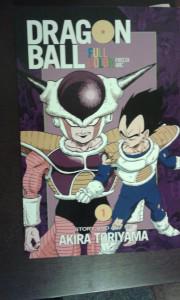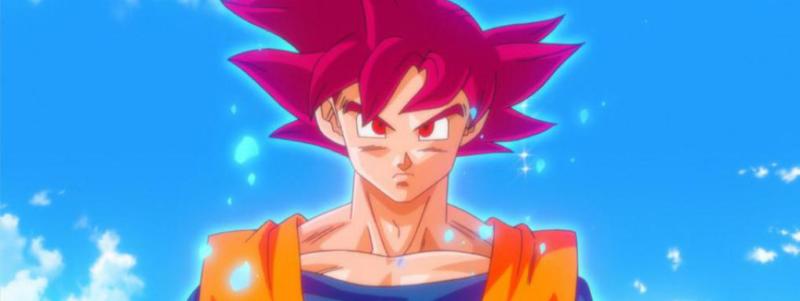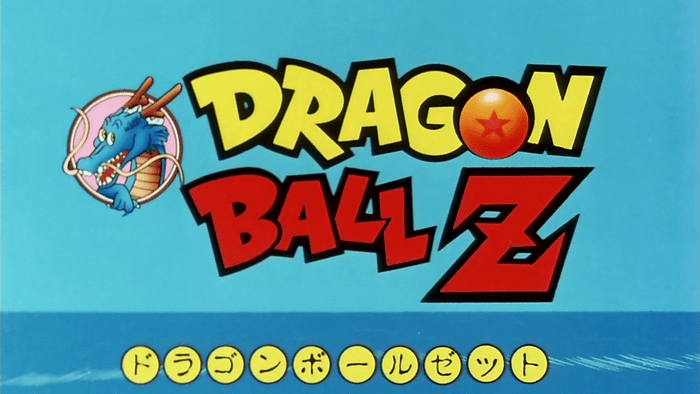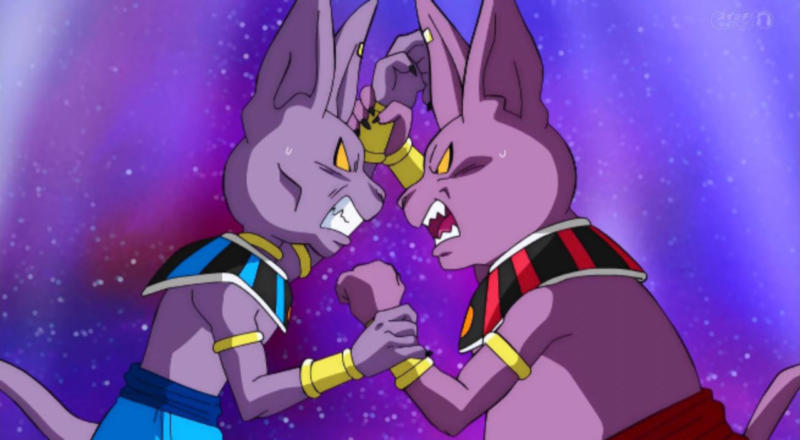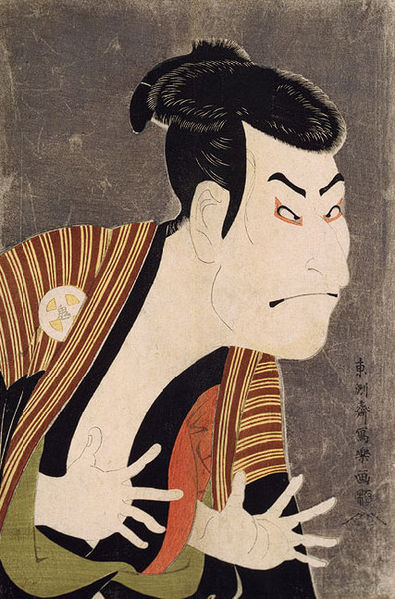
While most readers here are probably familiar with DBZ’s storyline, for those who aren’t I will briefly outline it here (needless to say, spoiler alert.) DBZ has its roots in the manga (and subsequent anime) Dragon Ball, began by Akira Toriyama in 1988, which followed a young boy with mysterious origins named Son Goku and his adventures to find the mystical Dragon Balls, objects that when collected could grant whatever wish the user desired. Goku met various friends and fought various foes (many who later became friends, a common theme throughout the series) on his travels.
DBZ picks up five years after Dragon Ball, when Goku is a full grown man and father to a boy named Gohan. The series begins with the arrival on Earth of Raditz, a member of the elite Saiyan race, conquerors who depopulate worlds and then sell them to the highest bidders. Goku discovers that he is Raditz’s brother, and he was sent to Earth to destroy it as an infant, a mission he forgot when he suffered a bad head injury. Raditz tries to enlist Goku to the Saiyan cause, kidnapping Gohan. Goku teams up with his former enemy, Piccolo, and the two manage to defeat Raditz at the cost of Goku’s life. Goku’s friends learn that two far more powerful Saiyans–Prince Vegeta and his retainer, Nappa–are on their way to Earth to steal the Dragon Balls. For a year, the heroes of Earth train to defeat the threat. Goku himself trains in the afterlife with King Kai, a god-like being who teaches Goku various techniques to use while facing the Saiyan threat.
The Saiyans arrive sooner than expected, and most of Goku’s friends die or are defeated trying to take them on. Goku arrives and defeats Nappa, and then engages Vegeta in battle. With help from Gohan and Krillin, he manages to defeat the Saiyan prince, but in a characteristic bout of mercy he forbids Krillin from killing Vegeta, who manages to escape.
I just outlined the first of four arcs that comprised the entire DBZ series (and the only one I have personally seen most of the way through, on DBZ Kai currently playing on Toonami.) I confess that my original perception of DBZ was not favorable, but I have since changed my mind about the series. I did not grow up with it as some of you did, but rather I came to it later after seeing the shows it influenced like Bleach, Naruto, and Inuyasha. Watching the shows “backwards” like that makes it easy to see in retrospect the huge impact DBZ has had on anime as a genre.
DBZ opens the floodgates
To truly understand DBZ’s impact on anime, we have to return to my personal favorite decade: the 90s. At that time, anime was still relatively obscure, the domain of kids shows such as Astro Boy, Speed Racer, and Voltron. While more mature anime like Akira were being produced, they were not widely seen outside of Otaku circles.
The first huge inroad of anime into American and European popular culture was Pokemon. With its triple threat of a popular cartoon, a wildly popular video game, and merchandise, Pokemon was able to make a big splash in America in the late 90s. However, this was still operating within the paradigm that anime was either for kids (according to the American norm that cartoons are “kid stuff”) or they were hyper violent, adult movies. So far, nothing quite bridged the gaps between the two extremes.
Anime fans began to make inroads into the popular culture when Cartoon Network began to place a show called “Toonami” in its 4-6pm time slot on weekday afternoons. The slot mostly consisted of Japanese anime, much of it never seen within the US outside of Otaku circles. One of these shows was DBZ, which was initially a ratings flop, but quickly rebounded to become the most popular show on the network.
Saturated as we are today with DBZ influenced Shonen, it is difficult now to comprehend how revolutionary the show was at the beginning of the 21st century. The series was a middle ground between the two extremes mentioned above. It featured epic battles that were fraught with peril, themes about friendship and honor, a diverse cast and a complex, multifaceted world. There was something in DBZ for everyone. The show struck a nerve among viewers, who could not get enough. It spawned toy lines, video games, and other related merchandise, growing into a massive global phenomenon that persuaded artists and executives alike that there was a huge demand for anime among diverse groups all around the world.
Influence on Shonen
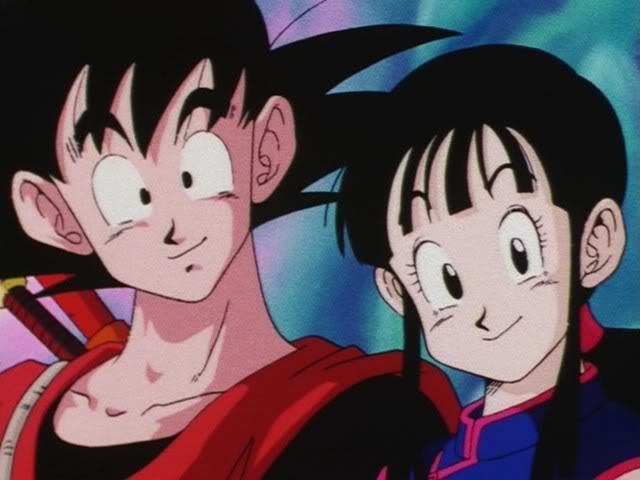
In order to understand the staggering influence DBZ has had on Shonen, I have put together features of the series that seem integral to Toriyama’s style that have been imitated in other series. These include: prolonged fights, complex plots, a large cast, deaths of main characters (mentioned because this was not a feature of American cartoons before DBZ), enemies becoming friends, heroes with unique powers who nevertheless are underdogs and have to work incredibly hard to master their abilities, a mix of humor and suspense, and changing art styles to emphasize character development. The series I will examine in this section are Bleach and Naruto, because those are the Shonen I am most familiar with.
The first four features (prolonged fights, complex plots, a large cast, and the deaths of main characters) are patently obvious to anyone who has watched Bleach or Naruto. The numbers of characters in both shows are dizzying, and the respective plots take multiple flow charts and spreadsheets to to hope to understand all their intricacies. Bleach breaks the mold a bit by being reluctant to kill good guys, something Naruto is not reluctant to do, but all in all both shows fit these basic themes. Since these features might be expected of any fantasy type story, not only anime, nothing further needs to be said about them.
The fifth feature (enemies becoming friends) is where the similarities of both series to DBZ become apparent. In Bleach, Ichigo Kurosaki faces many foes during his adventures as a substitute Soul Reaper. One of his first rivals is Renji Abarai, the Liutentant of Squad Six. When Ichigo and his friends attack the Soul Society to try and free Rukia Kuchici, Renji opposes them. He and Ichigo face off in a climactic battle, where Ichigo bests Renji and earns his respect. The process repeats again when Ichigo beats Kenpachi Zaraki and, the ultimate antagonist of the first arc, Beyoqua Kuchiki, Rukia’s own brother. All of these characters become Ichigo’s allies as the series’ true antagonist reveals himself. A similar arc can be see in Naruto Shippuden with Sai, the mysterious Shinobi who accompanies Naruto and his team on a mission to . Sai originally set out to assassinate (insert name), but had a change of heart when confronted with Naruto’s kindness. The rivals, then, became friends.
Both Bleach and Naruto feature protagonists who have unique abilities but must train hard to unlock them. Ichigo can see spirits, but feels powerless to do anything to protect his friends from them. When he is given the power of a substitute Soul Reaper, he gains powers but faces ever stronger enemies that force him to dig deeper and deeper within himself to dredge up his inner potential.
For his part, Naruto had the spirit of a nine-tailed fox sealed within him as an infant. This gave him a huge amount of chakra (analogous to chi in DBZ, the force that fuels the many energy attacks used by characters in the series. Bleach calls the force spiritual pressure. Inuyasha calls it demonic energy. Another obvious influence.) Naruto has difficulties controlling this chakra, and he does not perform on par with his peers, a fact that he makes up for with tireless effort and abundant cheer.
Both Naruto and Bleach put their characters in mortal danger, but also tend to feature a lot of humor to try and break the tension. DBZ strikes the balance well, as much of the humor was based on puns and word play, being less disruptive than some of the comedic sketches in Naruto and Bleach. Bleach especially has comedic arcs and characters who are grating to a degree that it detracts from the overall quality of the show.
Finally, the art style of both Naruto and Bleach change to reflect the changes in the characters. Between Dragon Ball and Dragon Ball Z, the character design changed from rounded, chibi like characters to more muscular characters with angular faces, to emphasize the more adult nature of DBZ. In Bleach, Ichigo becomes physically more imposing and undergoes various costume changes as the series progresses. The other characters gradually take on harder lines and a more mature look as well. In Naruto, there is a fundamental shift in style from Naruto to Naruto Shippoden. Naruto looks far older in Shippoden, despite only two and a half years passing between the respective series.
Bad habits picked up from DBZ
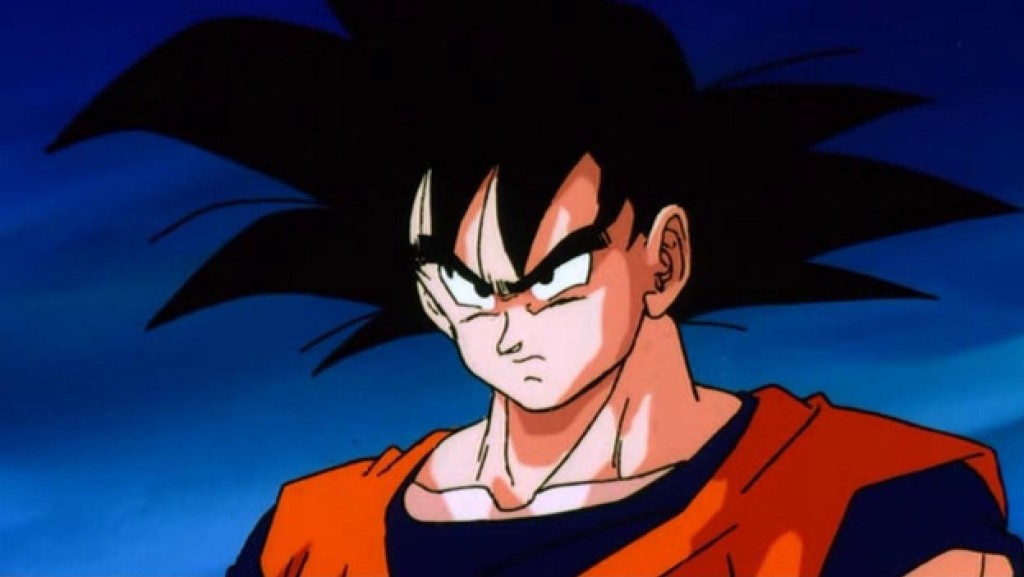 As well loved as it is, DBZ is by no means perfect. While many works inspired by DBZ have used its formula well, there are aspects of DBZ that have translated into the wider world of Shonen that could easily be described as bad habits. Some of these bad habits have been documented here on JapanPowered before, but it would be good to briefly reiterate how many of them originated with DBZ. For this particular analysis, I will look at One Piece, the anime that I believe is the worst offender in all categories.
As well loved as it is, DBZ is by no means perfect. While many works inspired by DBZ have used its formula well, there are aspects of DBZ that have translated into the wider world of Shonen that could easily be described as bad habits. Some of these bad habits have been documented here on JapanPowered before, but it would be good to briefly reiterate how many of them originated with DBZ. For this particular analysis, I will look at One Piece, the anime that I believe is the worst offender in all categories.
Probably the worst offense DBZ is responsible for perpetrating on anime watchers were its filler arcs and padding. The show has become infamous for the amount of padding and filler, to the point that in 2009, the show was remade as DBZ Kai (literally “revisited”), a take on the DBZ story that cut it down to its essentials, removing interminable filler arcs that made the original difficult for some (including myself) to swallow. One Piece is probably the worst offender in this category, with its tendency for arcs to last for ages, and an almost compulsive commitment to explaining the minutaie of a character’s back story in the middle of what should be an action sequence (I’m thinking of the end of the Ennis Lobby arc, where Luffy and his crew jumped down onto the sea train after a flash back for about six episodes.) Naruto tended to get bogged down in filler arcs (I quite watching the original series before that happened) and Bleach’s bount arc is roundly despised among fans.
Some of the filler problem has to do with the transition from Manga to Anime, and the fact that the source material cannot always keep up with the anime. Ongoing Shonen tend to be the worst offenders simply due to their open ended nature. Still, it is a definite black eye on the genre and a possible barrier for it to spread to even wider audiences. Filler and padding are bad story telling, simply put.
The Lasting Appeal of DBZ
Despite its problems, DBZ is still going strong. Fans both new and old continue to crave more adventures from Goku and his gang. Why does the series have such lasting appeal? Aside from the over the top action and entertaining storylines, DBZ has an emotional appeal. At its core, it is about a man who works hard to do the right thing and to protect his friends. Goku is, put short, a really good guy. He’s the kind of guy that most of us would like to be ourselves. Indeed, he served as a role model of sorts for people who felt as if they were on the outside looking in. His ethics of hard work, kindness, fairness, and courage are qualities all of us would do well to emulate.
While the original DBZ series is long since ended, DBZ Kai has still yet to be completed. Work was stopped temporarily due to the 2011 earthquake and tsunami that devastated Japan, but plans to complete the fourth and final arc featuring Maijin Buu as the adversary continue. More recently, in 2014, DBZ Battle of the Gods was released in American theaters, the first IMAX release of a Japanese film in America.
Sources:
Gayomali, C. (2010) How Japanese Cool Came to America. The Atlantic. http://www.theatlantic.com/entertainment/archive/2010/05/how-japanese-cool-came-to-america/56693/
Chambers, S. (2012). Anime: From Cult Following to Pop Culture Phenomon. The Elon Journal of Undergraduate Research in Communications. https://www.elon.edu/docs/e-web/academics/communications/research/vol3no2/08ChambersEJFall12.pdf
Yadao, J. (2009). The Rough Guide to Manage. Penguin.
The American and Japanese Culture Trade (n.d). Water Cooler Journal. http://watercoolerjournal.com/the-american-and-japanese-culture-trade/
